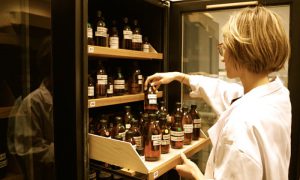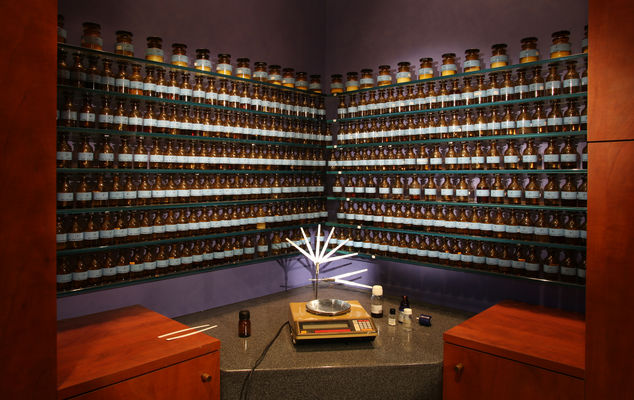The Osmothèque: France’s library of smells is a breath of fresh air
 Memories are precious. And few things are as good at evoking memories as smells. Now imagine someone decided your most cherished memory contained allergens that had to be banned? Your grandfather’s eau de cologne. Your mother’s favourite perfume. Reformulated, or in some cases, taken off the shelves altogether.
Memories are precious. And few things are as good at evoking memories as smells. Now imagine someone decided your most cherished memory contained allergens that had to be banned? Your grandfather’s eau de cologne. Your mother’s favourite perfume. Reformulated, or in some cases, taken off the shelves altogether.
You needn’t despair. In France, where perfume is practically a religion, they have a copyright library of smells. The Osmothèque, in Versailles, is entitled to ask for the formula of every new fragrance marketed in France. And it has all the old ones, too. That’s important because no one’s immune when it comes to EU regulations. One of the key ingredients in Chanel No.5 is citral, now subject to restrictions because it can cause skin reactions. Likewise the oakmoss in Guerlain’s classic Mitsouko. Perfumers perform fancy footwork to keep them smelling roughly the same, but for the originals, you have to go to the Osmothèque.
The collection in Versailles has the formula of every new fragrance and also stocks sniffing samples of classic perfumes to conjure up your most cherished memories.
These olfactory madeleines are tended to by noses from the great perfume houses, many of whom give up their time voluntarily. You can visit, but it’s by appointment only. Occasionally, however, they let some of their bottles out into the world, to be sniffed (not tried on the skin – those allergens) under highly controlled conditions.
 Osmocurator Stéphanie Bakouche explained the history of fragrance, which turns out to be like the history of art but backwards (and slightly rearranged):
Osmocurator Stéphanie Bakouche explained the history of fragrance, which turns out to be like the history of art but backwards (and slightly rearranged):
- For a long time it was all photo-realism: reconstructions of natural smells like lily of the valley, or rose.
- Then perfumers went conceptual. Nowhere in nature does vanilla find it self cosying up to lavender with a chaser of civet, as with the monumental Jicky (1889). Or there’s Fougere Royal – “Royal Fern” (1882), which doesn’t smell of ferns (because they don’t smell). Instead it’s a combination of lavender and coumarin, a chemical extracted from tonka beans.
- But Le Jardin de Mon Curé (1895) is a work of pure impressionism: a conjuring up of the garden of a country priest, with flowers, herbs, and something rodentine lurking in the undergrowth.
